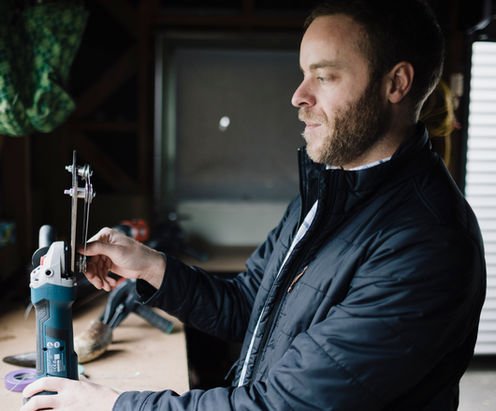COMPONENT DESIGN FOR ASSEMBLY
After the final concept presentation, MWDesign will focus on the approved product concept. This will be done primarily through 3D CAD modelling. We will further development the CAD models into precise components incorporating all features from the final concept design. The objective is to develop the design to allow us to create a prototype for testing, before investing in tooling.
Focusing on individual part components, MWDesign will refine the components and design out the cost to enable us to maintain quality while meeting our budget cost. We will begin engineering the parts for the product, focusing on functional aspects of the design.
COMPONENT DESIGN FOR ASSEMBLY
After the final concept presentation, MWDesign will focus on the approved product concept. This will be done primarily through 3D CAD modelling. We will further development the CAD models into precise components incorporating all features from the final concept design. The objective is to develop the design to allow us to create a prototype for testing, before investing in tooling.
Focusing on individual part components, MWDesign will refine the components and design out the cost to enable us to maintain quality while meeting our budget cost. We will begin engineering the parts for the product, focusing on functional aspects of the design.
COMPONENT DESIGN FOR ASSEMBLY
After the final concept presentation, MWDesign will focus on the approved product concept. This will be done primarily through 3D CAD modelling. We will further development the CAD models into precise components incorporating all features from the final concept design. The objective is to develop the design to allow us to create a prototype for testing, before investing in tooling.
Focusing on individual part components, MWDesign will refine the components and design out the cost to enable us to maintain quality while meeting our budget cost. We will begin engineering the parts for the product, focusing on functional aspects of the design.
SOLETECH FETOTOMY & HORN SAW CONCEPTS
An efficient, modern and ethical approach to veterinary procedures.
Soletech came to MWDesign with a simple idea to change century-old veterinary methods of dehorning cattle as well as address faults in current fetotomy saws used by vets around the world.
Currently, vets will use two small T shaped handles connected together with a braided wire to manually cut through horns on cattle using an alternating pulling action with their arms. This can be a long, physically demanding process for the vet, requiring a lot of strength and control of the wire to maintain an accurate cutting speed whilst keeping the wire in the correct location on the horn.
The wire used can often break during this process, resulting in a prolonged procedure which can cause stress on the animal.
Soletech has invented a solution, guided by MWDesign, to use a battery drill to power a reciprocating wire quickly and accurately, eliminating the need for physical labour by vets, reducing risk of wire breakages whilst improving animal welfare.
The horn saw allows for quick set up and changing of wire. The saw allows for a large range of horn sizes, maintaining tension and speed of the wire to cauterize the horn whilst cutting, preventing further growth and reducing any bleeding from the cattle.
Vets are using similar tools to the horn saw for fetotomy procedures, which involves removing a deceased fetus from inside a cow, when it threatens the life of the mother. This could be due to the calf being too large to remove, or it could be risking infection in the cow due to early decomposition.
The current T shaped handles, and wire with fetotomiser are a physically straining method of disecting the calf, requiring at least two people to perform the procedure. The reciprocating movement of the wire involves the vet using their full reach to pull back and forth with the wire whilst the other holds the fetotomiser in place. The wire needs enough length and speed to be able to cut through soft tissue of the fetus which can be physically demanding for the typical vet in NZ, a young female.
Again, a long enduring process like this can cause unnecessary stress on the cow, especially when her life is already at risk.
Soletech's fetotomy saw design eliminates physical labour whilst reducing procedure time and stress on the mother. Two reels of wire spool and unspool simultaneously to create a reciprocating sawing action whilst allowing for the required length of wire to reach inside the cow and around the fetus. Drag adjustment on the spools allow the saw to maintain tension on the wire as the loop around the fetus reduces in length.
A lightweight, powered design reduces physical strain on the user's body. The design also allows for the device to be used by a single person during the procedure. The device is safe, easy to clean and allows for efficient changing of wire reels.
These revolutionary designs are registered and patented by Soletech, and are being developed in conjunction with MWDesign. These devices will improve animal welfare around the world and reduce physical labour on vets during these procedures, enabling efficiency in the field whilst reducing stress on the animal.
For more information, please visit soletech.co.nz
You can also read more about David Sole and his inventions here.





















